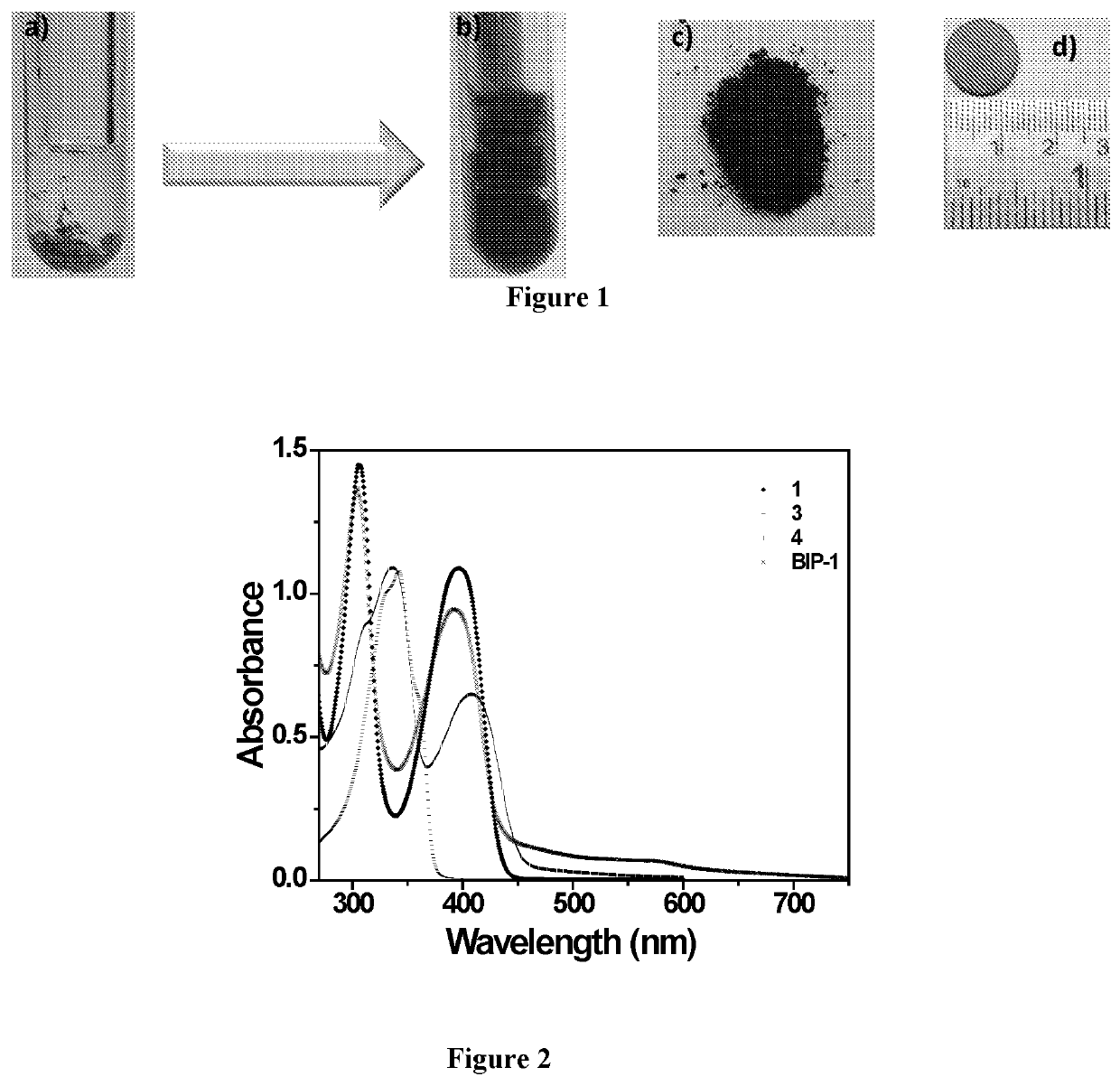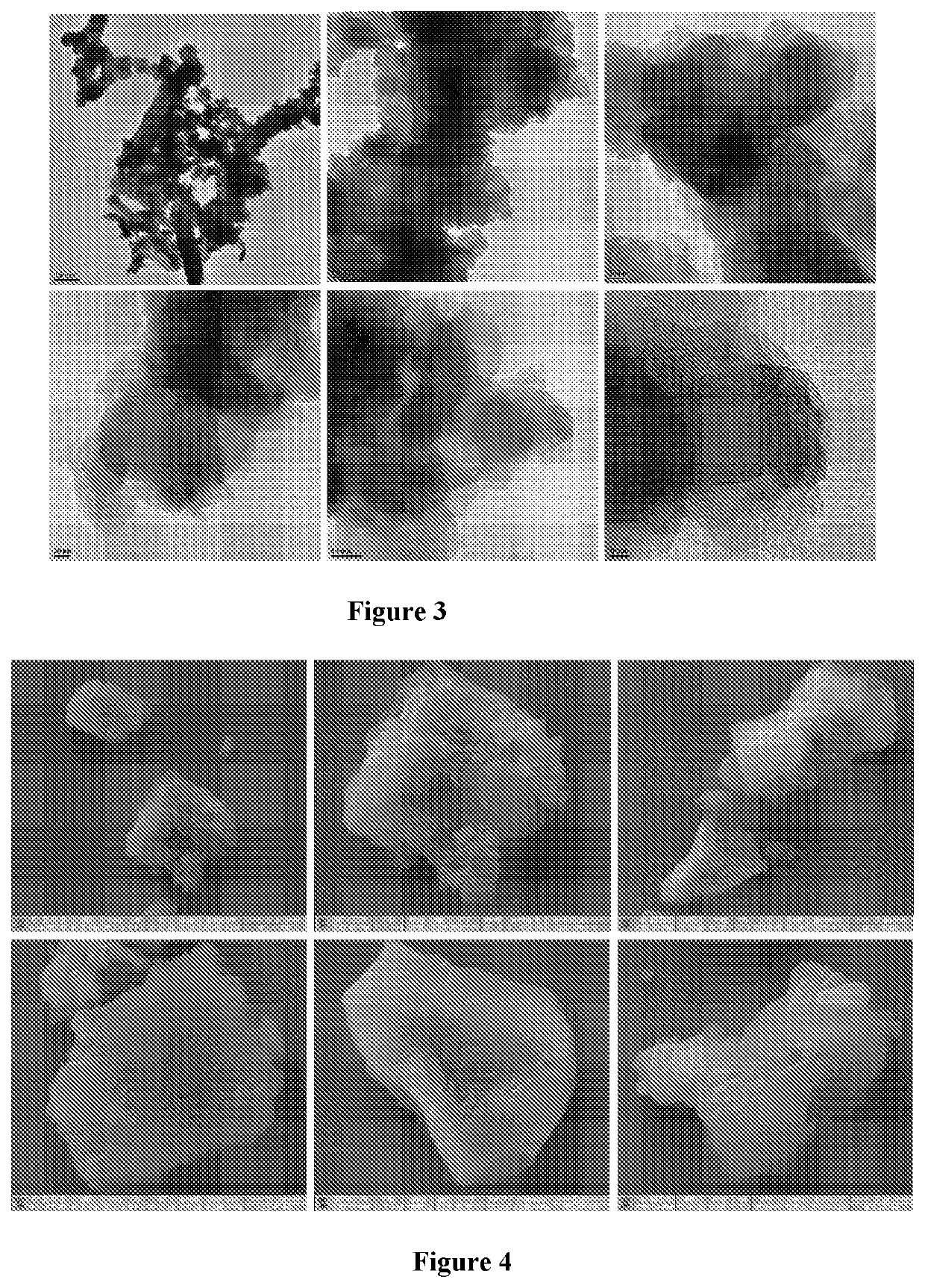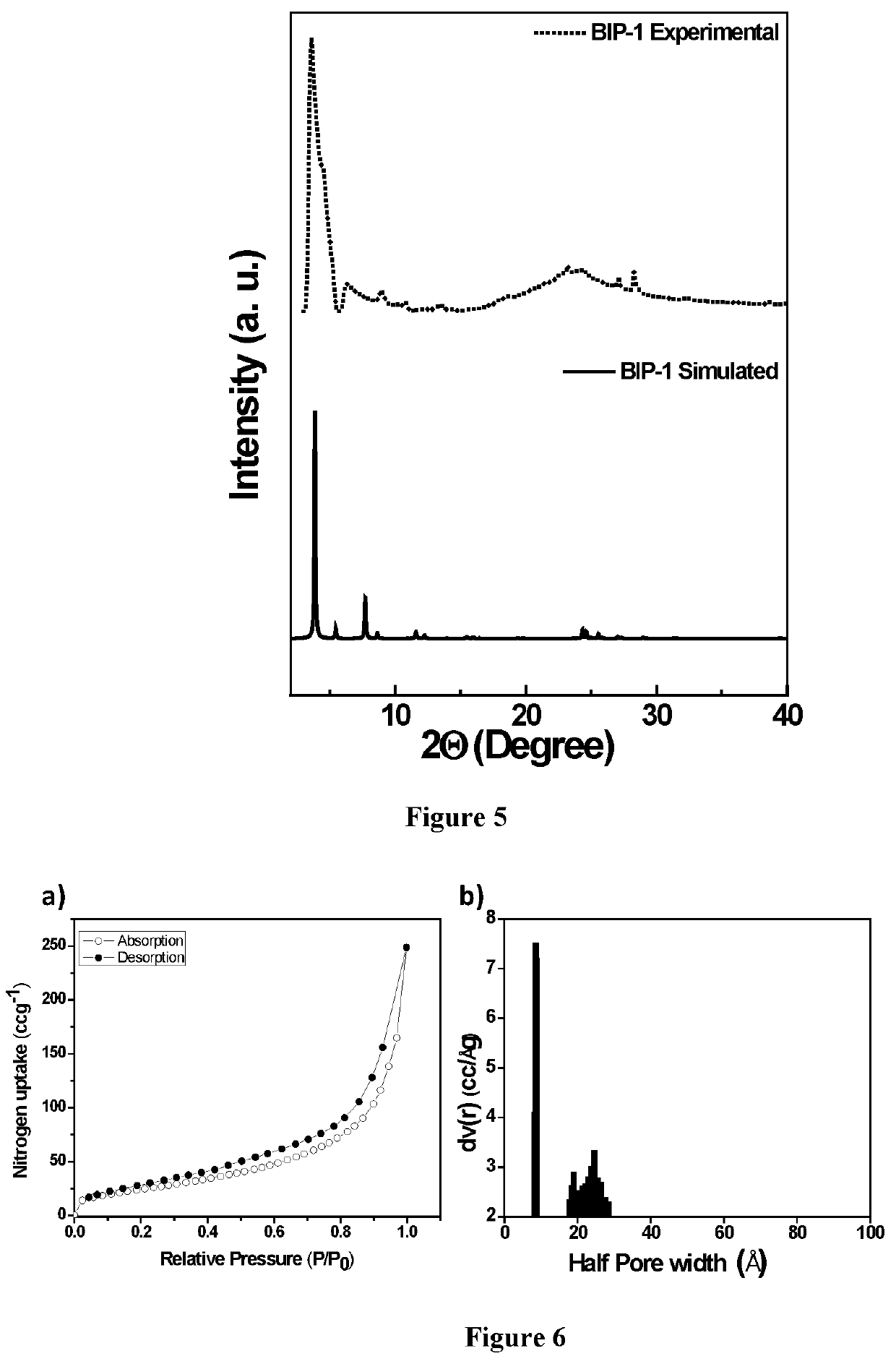A crystalline, two dimensional polymers and a process for the preparation thereof
a two-dimensional polymer and crystalline technology, applied in the field of crystallized, two-dimensional polymers of formula i, can solve the problems of unavoidable proton carrier leaching from the channel, and materials invite serious challenges to commercialization
- Summary
- Abstract
- Description
- Claims
- Application Information
AI Technical Summary
Benefits of technology
Problems solved by technology
Method used
Image
Examples
example 1
of 1,3,6,8-tetrabromopyrene
[0079]
[0080]To pyrene 1.01 g (5.0 mmol) in nitrobenzene (15 mL) was added bromine 3.52 g (22.0 mmol) dropwise at room temperature, and the mixture was stirred at 120° C. for 4 h. The reaction mixture was filtered, and the residue was washed with methanol (50 mL) and acetone (50 mL). After drying under reduced pressure, 1,3,6,8-tetrabromopyrene was obtained as a pale yellow solid in 2.54 g, Yield: 98%. (due to poor solubility, 1,3,6,8-tetrabromopyrene is not characterized in this step and directly used for the next step)
example 2
of 1,3,6,8-tetrakis (4-(methoxycarbonyl)phenyl)pyrene
[0081]
[0082]A mixture of 4-(methoxycarbonyl)phenyl)boronic acid 1.040 g (5.80 mmol), 1,3,6,8-tetrabromopyrene 0.500 g (0.97 mmol), tetrakis(triphenylphosphine) palladium (0) 0.030 g (0.026 mmol), and potassium tribasic phosphate 1.1 g (5.30 mmol) in dry dioxane (20 mL) was charged in a 30 mL sealed tube filled with argon and capped. This mixture was stirred under argon for 72 h at 130° C. in an oil bath. The reaction mixture was evaporated to dryness and the solid residue was washed with water to remove inorganic salts. The insoluble material was extracted with chloroform (three times by 50 mL), and the solvent volume was reduced under vacuum. The residue was boiled in tetrahydrofuran for two hour and filtered;
[0083]the resulting filtrate contained mainly impurities. Pure 1,3,6,8-tetrakis(4-(methoxycarbonyl)phenyl)pyrene obtained as an yellow solid, 0.58 g, Yield: 82%.2
1H NMR (400 MHz, CDCl3): δ ppm 4 (s, 12H), 7.76 (d, 8H), 8.02...
example 3
etrakis (p-benzoic acid) pyrene (1)
[0085]
[0086]To a 250 mL round bottom flask containing 0.58 g (0.78 mmol) of solid 1,3,6,8-tetrakis(4-(methoxycarbonyl)phenyl)pyrene, a solution containing 1.5 g (37.5 mmol) NaOH in 100 mL of a THF / water (ratio 1:1) mixture was added and the resultant suspension was vigorously stirred under reflux overnight. The solvents were removed under vacuum and water was added to the residue which formed a clear yellow solution. The clear yellow solution was stirred at room temperature for 2 h and the pH value was adjusted to 1 using concentrated HCl. The resulting yellow solid was collected by filtration, and washed with water several times. The crude product was recrystallized from DMF, filtered, washed with chloroform and dried under vacuum. This gave the pure product, as yellow solid 0.49 g, Yield: 91%.
1H NMR (400 MHz, DMSO-d6): δ ppm 7.82 (d, 8H), 8.05 (s, 2H), 8.12 (d, 8H), 8.17 (s, 4H), 13.11 (s, 4H). MALDI-TOF MS: m / z calculated for C44H26O8 [M]+: 682....
PUM
| Property | Measurement | Unit |
|---|---|---|
| temperature | aaaaa | aaaaa |
| temperature | aaaaa | aaaaa |
| temperature | aaaaa | aaaaa |
Abstract
Description
Claims
Application Information
 Login to View More
Login to View More - R&D
- Intellectual Property
- Life Sciences
- Materials
- Tech Scout
- Unparalleled Data Quality
- Higher Quality Content
- 60% Fewer Hallucinations
Browse by: Latest US Patents, China's latest patents, Technical Efficacy Thesaurus, Application Domain, Technology Topic, Popular Technical Reports.
© 2025 PatSnap. All rights reserved.Legal|Privacy policy|Modern Slavery Act Transparency Statement|Sitemap|About US| Contact US: help@patsnap.com



